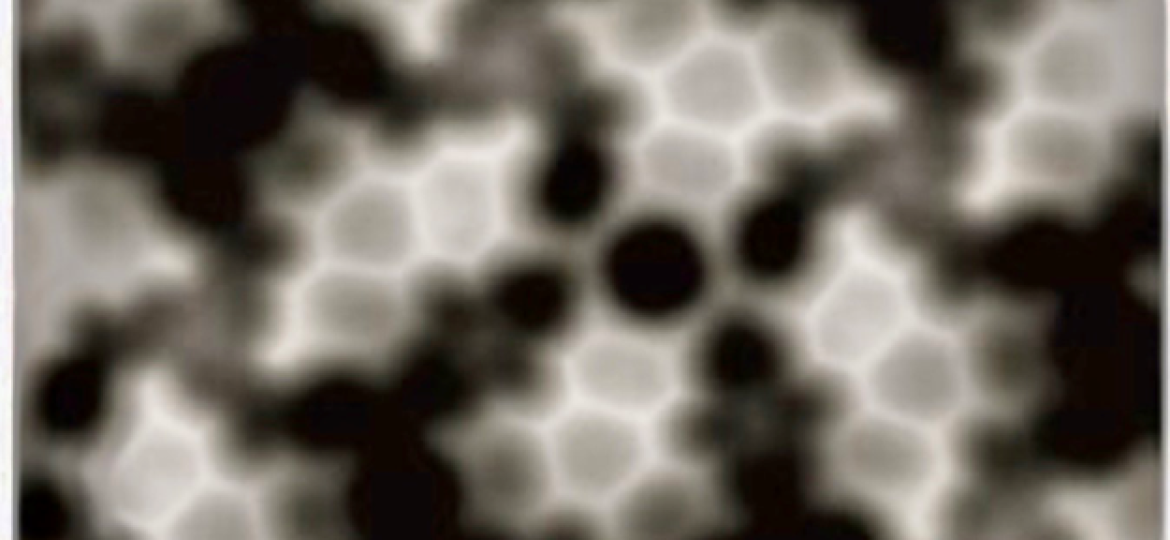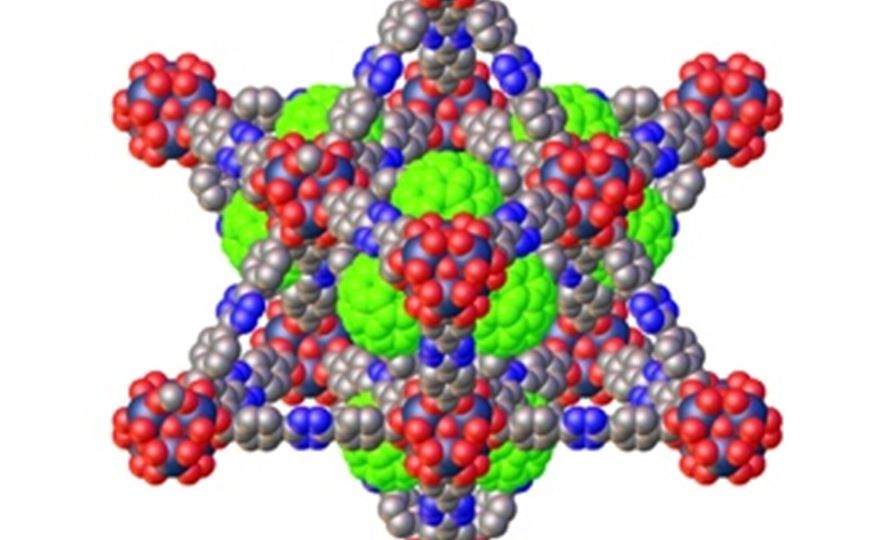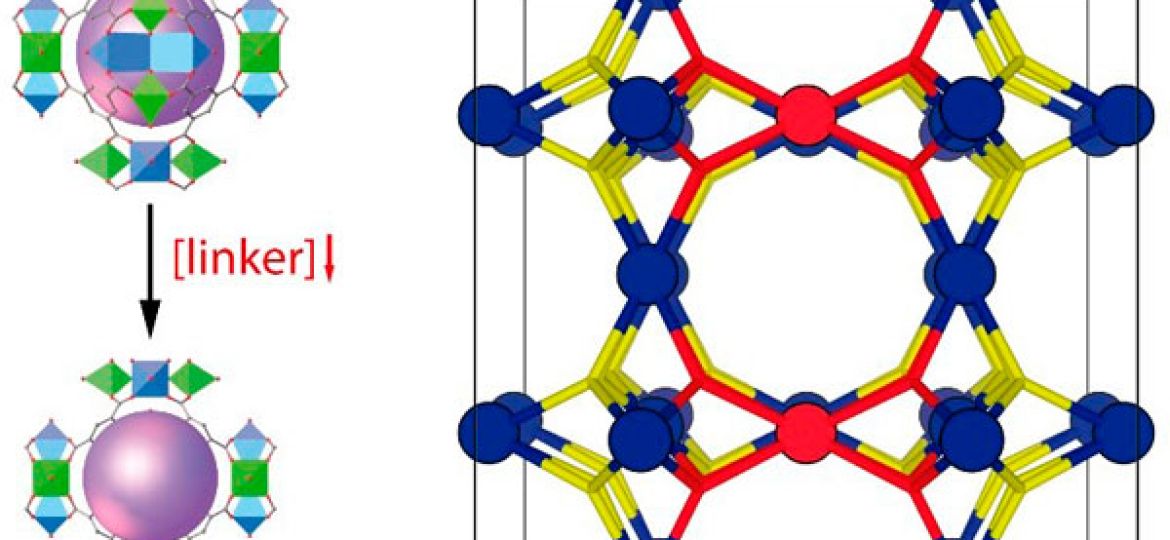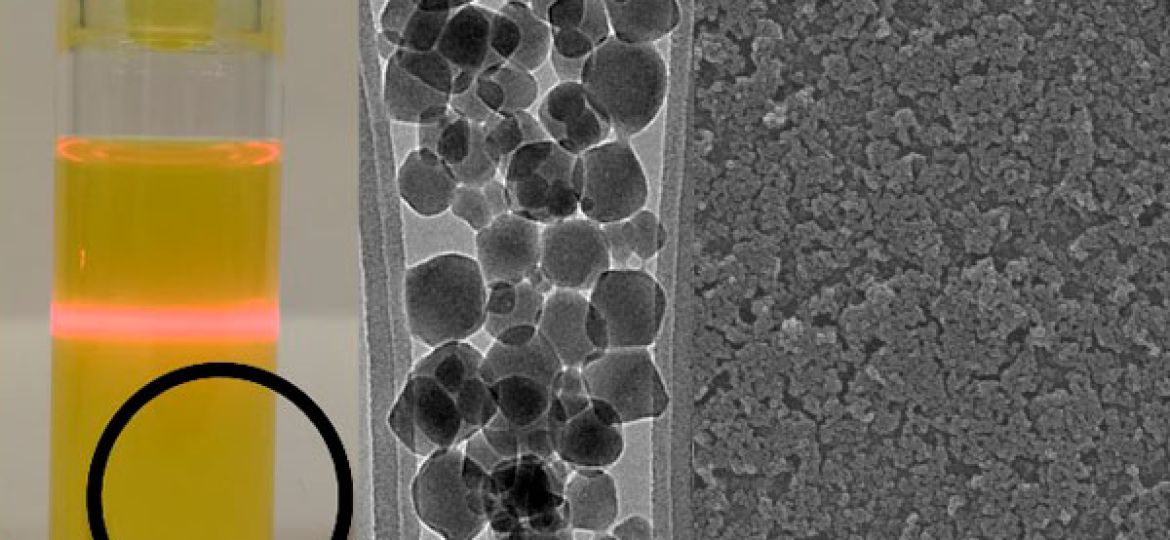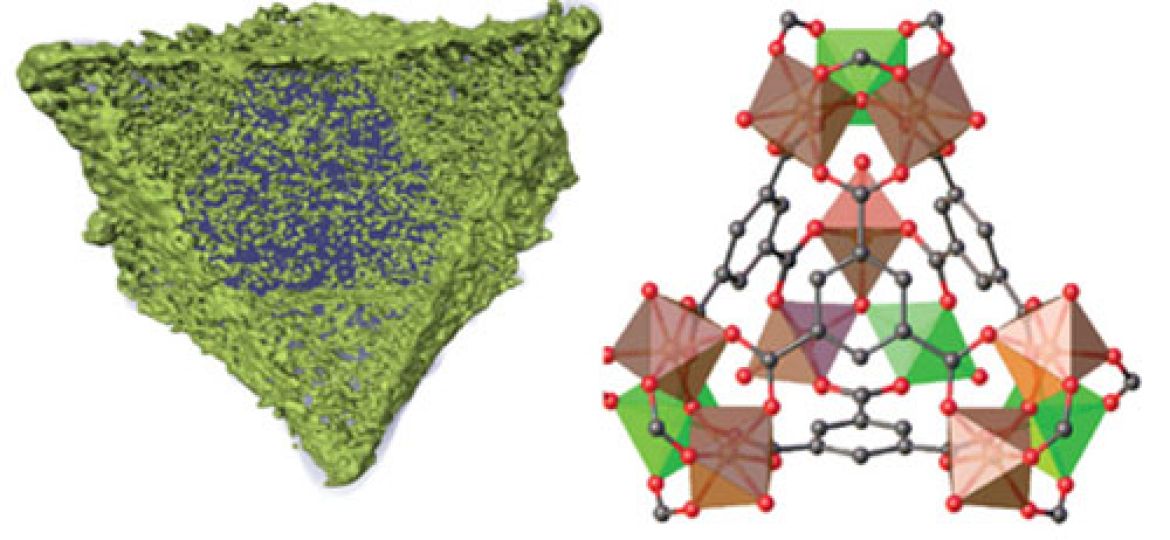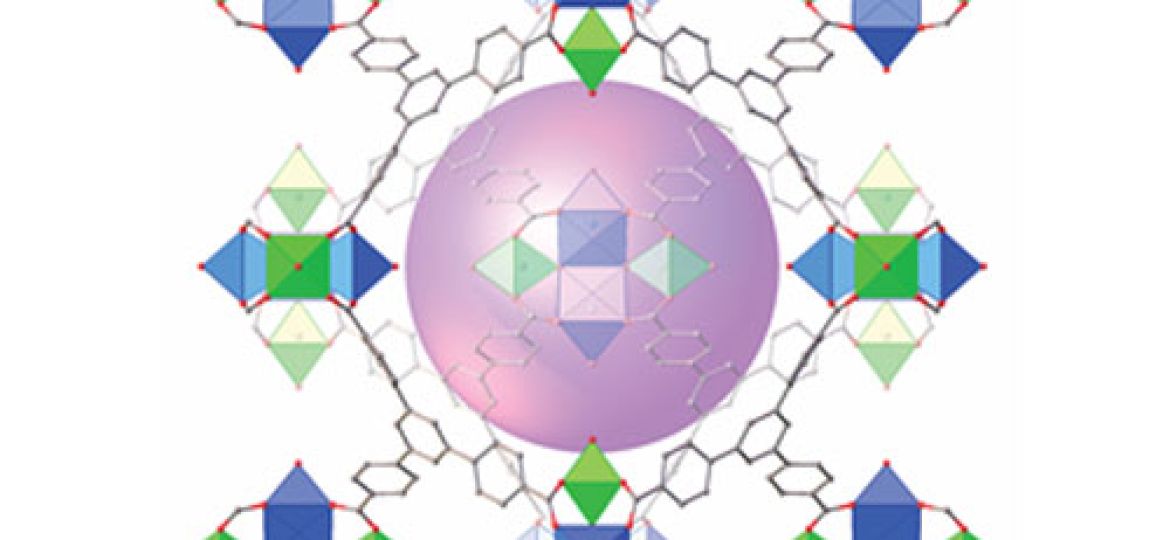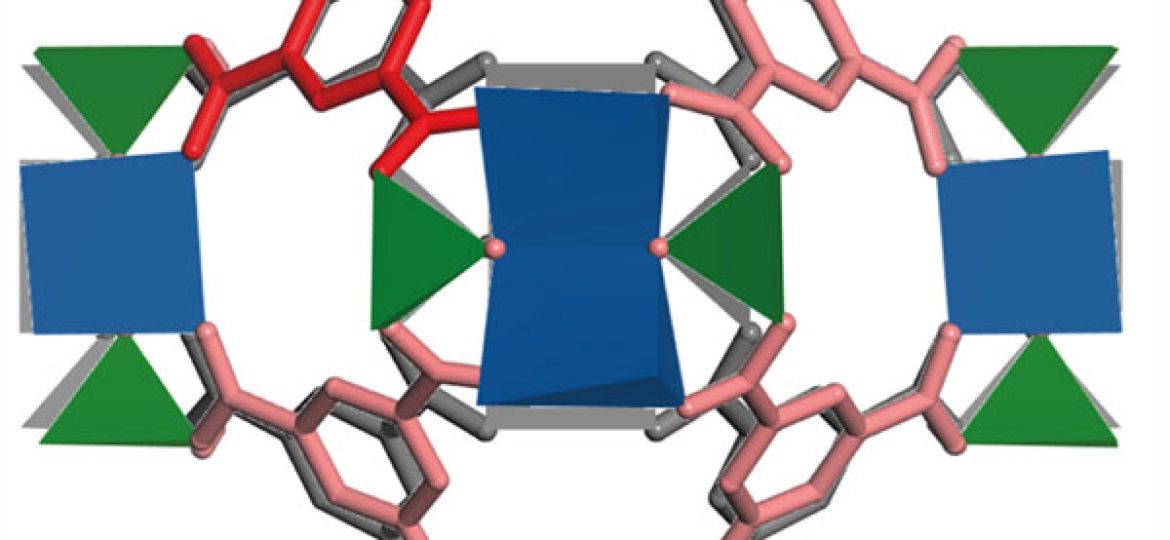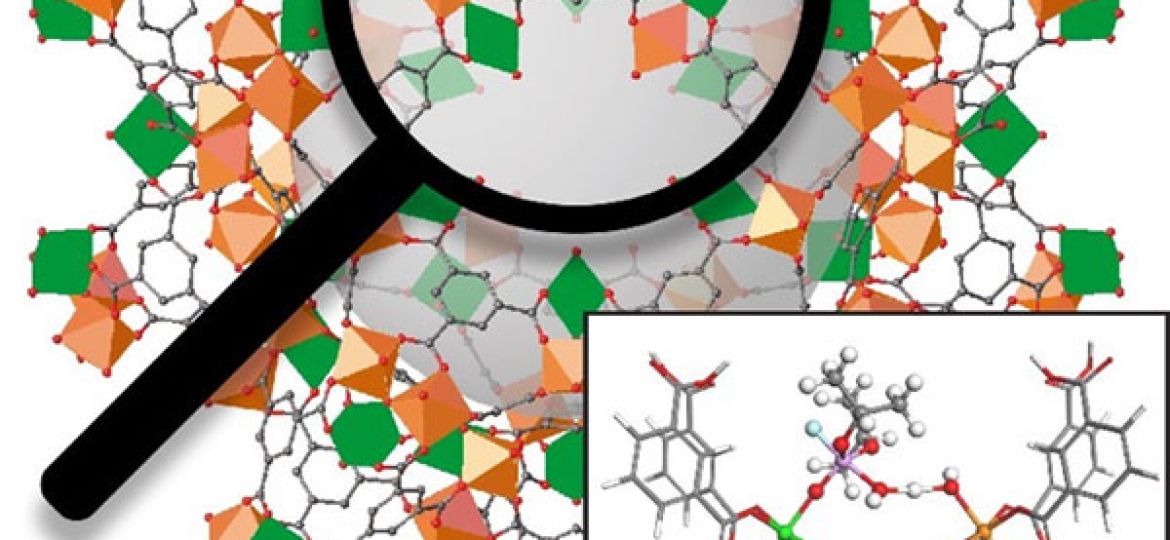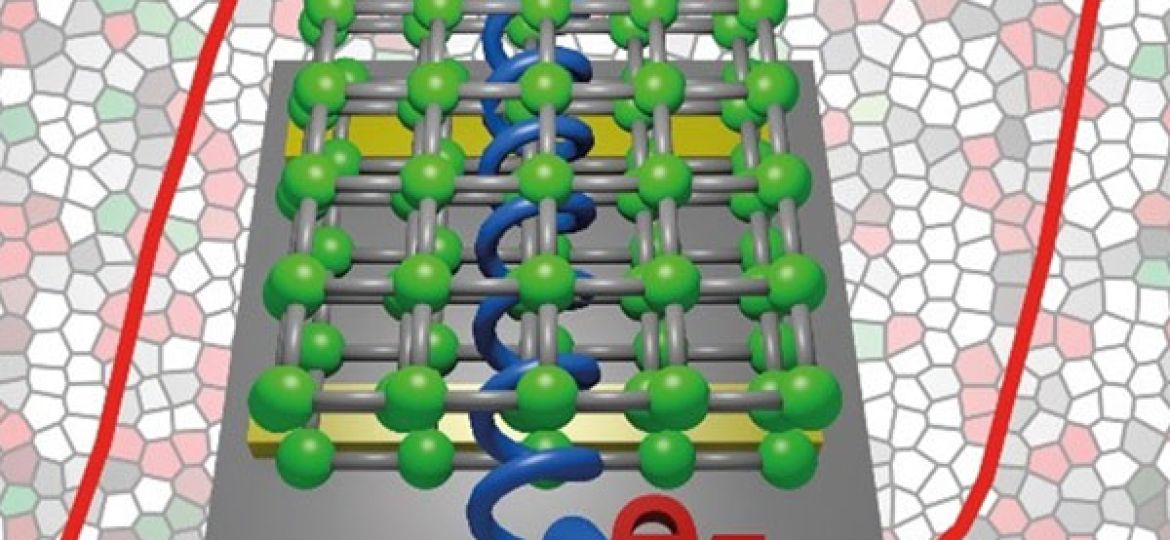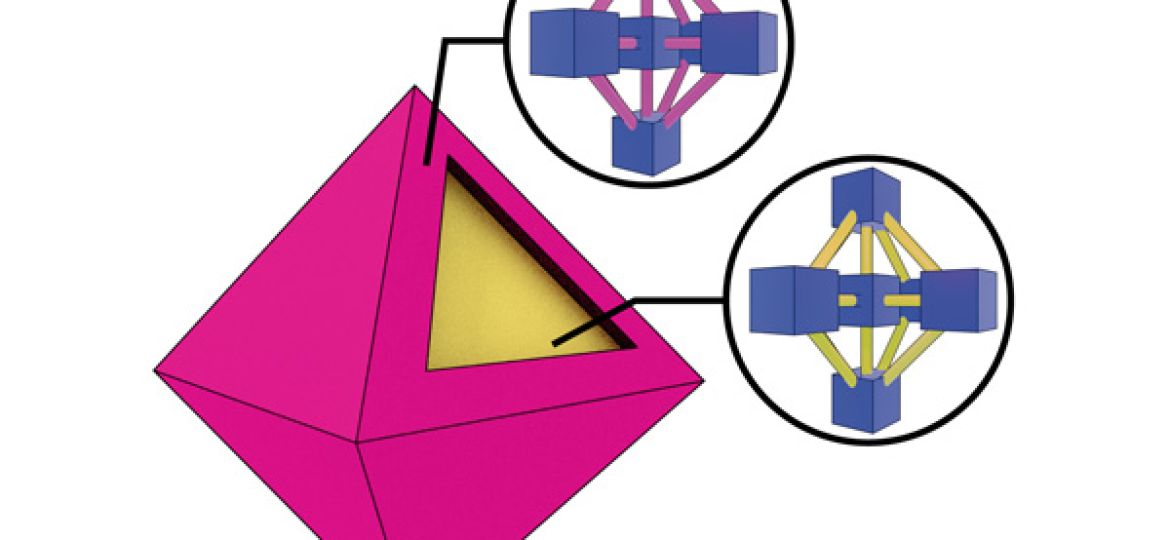Our collaboration with David Écija´s lab at IMDEA Nanoscience has been published in JACS. The wok describes how the use of conductive surfaces to template the growth of 2D networks based on HTTP linkers enables to obtain unprecedented 2D topologies that preserve a large orbital magnetic moment.
The recent work by Belén and Carol has been published in Angewandte Chemie. The manuscript demonstrates the general value of tetrazine linkers as plug-and-play tags for general framework functionalization in one-step and how this ligation strategy can be can useful to produce crystalline fulleretic materials by controlling the spatial distribution of C60 molecules in the framework.
This manuscript by Isabel has been published in Chemical Science. The manuscript shows the value of integrating experimental work, computational modelling and thorough characterization in rationalizing the impact of defects over the porosity and structure of the titanium framework MUV-10. Click for more info.
Maria´s work has been published in Chemical Communications. The work is focused on the use of amphiphilic modulators to control the formation of titanium MOF nanoparticles with minimum impact to the framework to enable the fabrication of highly porous thin films. Click for more info.
Javi´s work during his stay in KAUST in J. Gascón´s group has been published in Chem Catalysis. The work illustrates the exciting possibilities offered by MUV-101(Fe) for the production of catalytic materials not accessible through traditional synthetic routes and opens the door to translating the atomic control of metal composition and distribution of the parent MOF onto complex mixed-oxide structures with industrial applications. Check the web for more info.
Elenas work has been published as hot paper in Angewandte. Her work introduces the first example of isoreticular titaniumorganic frameworks, MUV-10 and MUV-12, to show how the different affinity of hard Ti(IV) and soft Ca(II) metal sites can be used to direct selective grafting of amines for cooperative cycloaddition of CO2 to epoxides at room temperature and atmospheric pressure. Check the web for more info.
Isabel’s work has been published in Chemical Science. Her work shows the ability of isophthalic to promote defect creation in the heterometallic Ti-MOF of the MUV-10 family. Compared to monocarboxylic acids, this bidentate linker permits compensating the structural distortion and energy penalty imposed by breaking the connectivity of the underlying framework. Click for more info
Javier, Natalia and Neyvis work has been published in Chem. Their work shows how the combination of Ti(IV) with different metals leads to heterometallic Titanium-Organic Frameworks with catalytic activity towards the degradation of nerve agent simulants. The synergetic cooperation of Ti(IV) and Fe(III) sites enables the degradation of Sarin simulants in water without additional co-catalysts. By using an integrative experimental/computational approach, we answer one of the key open questions in the area of mixed-metal MOFs: how can the metals in the inorganic node influence each other for tuning the performance of the material? Click for more info
vVíctor’s review work on the charge transport and spin crossover properties of metal-organic frameworks (MOFs) and coordination polymers (CPs) has been published in the prestigious Chemical Society Reviews. This is FuniMat’s first review article so far and hopes to bring together two research interest that have been rarely considered together electrical conductivity and the spin crossover transition. The effects of processing the materials as nanofilms and a few significant functional devices are also analysed. We are confident that these areas hold great technological potential and we expect an increasing number of fundamental studies which are necessary for the integration of MOFs and CPs into more sophisticated electronic devices. You can read the full review here.
Belen’s work has been published in JACS. By using crystals of the mesoporous MOF UiO-68, we demonstrate how the conditions for linker exchange reactions permit controlling the incorporation of photoactive linkers across the crystals for asymmetric distributions that maximize photocatalytic performance. Click for more info

